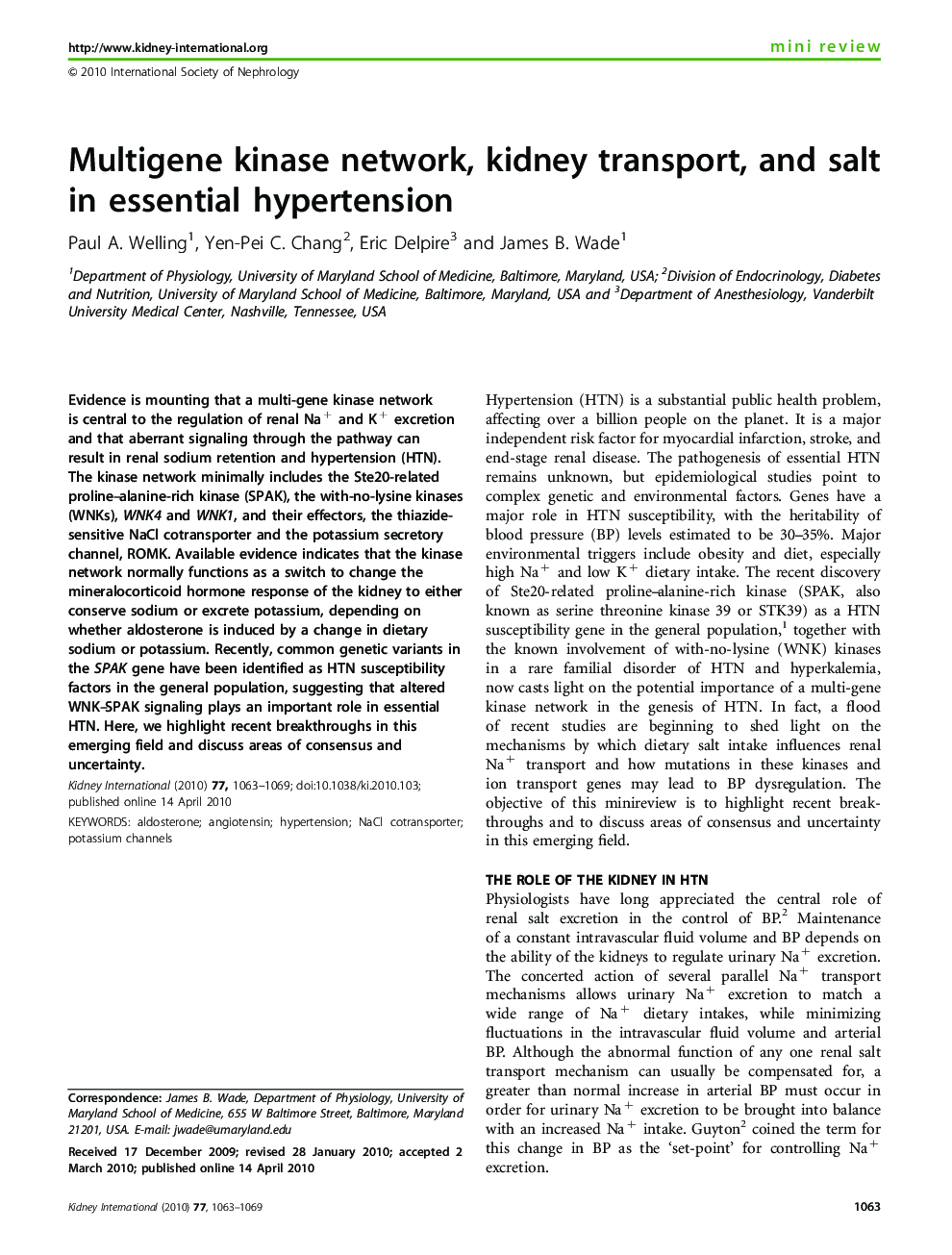| Article ID | Journal | Published Year | Pages | File Type |
|---|---|---|---|---|
| 3884877 | Kidney International | 2010 | 7 Pages |
Evidence is mounting that a multi-gene kinase network is central to the regulation of renal Na+ and K+ excretion and that aberrant signaling through the pathway can result in renal sodium retention and hypertension (HTN). The kinase network minimally includes the Ste20-related proline–alanine-rich kinase (SPAK), the with-no-lysine kinases (WNKs), WNK4 and WNK1, and their effectors, the thiazide-sensitive NaCl cotransporter and the potassium secretory channel, ROMK. Available evidence indicates that the kinase network normally functions as a switch to change the mineralocorticoid hormone response of the kidney to either conserve sodium or excrete potassium, depending on whether aldosterone is induced by a change in dietary sodium or potassium. Recently, common genetic variants in the SPAK gene have been identified as HTN susceptibility factors in the general population, suggesting that altered WNK–SPAK signaling plays an important role in essential HTN. Here, we highlight recent breakthroughs in this emerging field and discuss areas of consensus and uncertainty.
